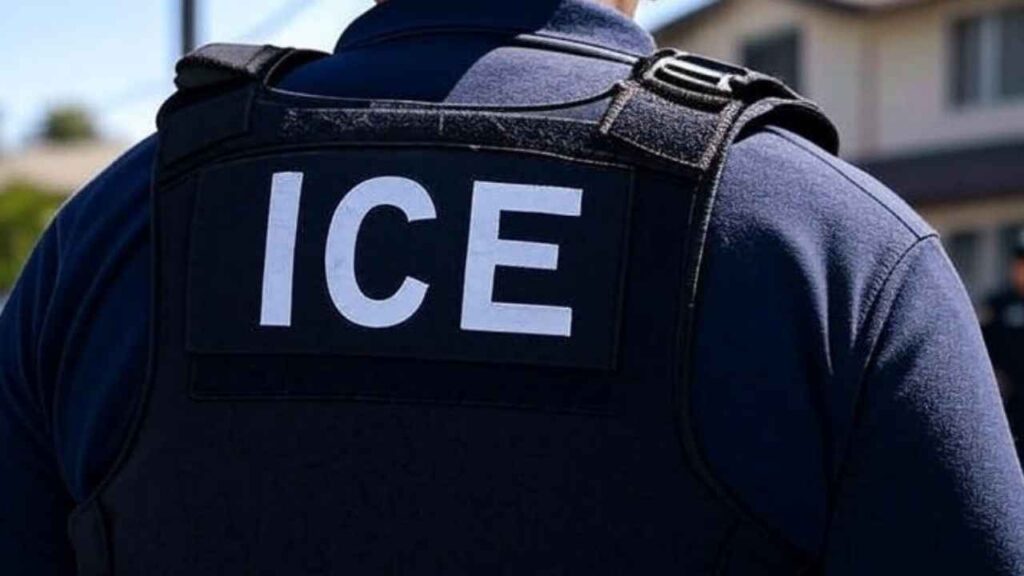Immigration and Customs Enforcement (ICE) operations have intensified significantly in both scope and frequency, aligning with campaign promises of large-scale deportations made by President Donald Trump. By early August 2025, documented immigration-related arrests surpassed 109,000, exceeding recent annual figures and approaching levels last seen during the Obama era.
Drawing on ICE data, news reports, and analysis from groups like the American Immigration Council and Migration Policy Institute, we aim to discover what are the hot areas for ICE raids and the consequential deportations, and what are the top nationalities that are targeted by the ICE agents.
Hot locations where the ICE raids are happening
The most significant ICE actions in 2025 have unfolded across both urban centers and rural communities, often targeting sectors reliant on immigrant labor such as agriculture, manufacturing, and illicit cannabis farming. One particularly large operation occurred on July 10th in Carpinteria and Camarillo, California.
There, a joint force of ICE and Border Patrol agents arrested at least 361 undocumented immigrants working at marijuana grow sites, also rescuing 14 children. Officials framed this raid as part of a broader federal crackdown on drug trafficking, illustrating how immigration enforcement increasingly overlaps with anti-narcotics efforts.
Massachusetts witnessed a massive operation on June 18th. ICE, supported by federal partners, arrested nearly 1,500 immigrants during a large-scale immigration enforcement action. The arrest of a 55-year-old Salvadoran national sought for serious crimes drew attention, but the sheer scale and impact on broader communities ignited controversy.
Texas has been a consistent flashpoint. Massive protests erupted in the city of Houston on February 2nd, followed by further demonstrations in Austin, Houston, and San Antonio in June. These were direct responses to raids that separated families and triggered reported labor shortages in the agricultural sector. Houston neighborhoods, in particular, have become hotspots, experiencing raids leading to mass detentions.
Other major cities facing significant ICE enforcement
- Los Angeles: Raids targeting farms and businesses sparked protests and reportedly caused a temporary pause in some agricultural operations in June due to economic pressure from labor shortages.
- New York: Over 20 arrests occurred during urban raids in January, explicitly focusing on sanctuary city jurisdictions.
- Miami, Atlanta, Phoenix, and Chicago: All reported notable ICE operations starting in January, concentrating on areas known for high immigrant density. Early ICE priority city lists reportedly named Miami, Los Angeles, Atlanta, New York, and Phoenix.
Rural areas haven’t been spared. California’s garment factories, farms, and restaurants have been raided, reportedly causing labor shortages reaching up to 45% in some agricultural fields. Additional operations were announced in January for Illinois, Utah, Minnesota, Florida, and Maryland, described as focusing on large-scale deportations with acknowledged family separation impacts.
Within the administration’s first 100 days alone, ICE reported arresting over 65,000 immigrants, including individuals linked to gangs like Tren de Aragua. Crucially, enforcement pressure isn’t limited to traditionally conservative (“red”) states; it has demonstrably intensified in politically liberal (“blue”) cities such as Los Angeles, Chicago, and New York, seen by observers as pressure tactics against local sanctuary policies.
States where the ICE raids bite deepest
The states most impacted by ICE’s 2025 raids reflect a complex interplay of demographics, local political climates, and levels of cooperation with federal authorities.
Texas stands at the forefront. With over 800 arrests per million residents, it accounts for roughly 24% of the total 109,000 arrests recorded by July. This intensity stems from its large immigrant population and its extensive network of 287(g) agreements. These pacts empower local law enforcement to perform immigration officer functions, and Texas utilizes hundreds of them.
Florida follows closely, contributing about 11% of total arrests. It similarly benefits from 307 active 287(g) agreements and operates within a political environment generally supportive of federal enforcement priorities.
California, despite its official sanctuary state status, ranks third with approximately 7% of arrests. Enforcement here is driven by raids in agricultural regions and major urban centers like Los Angeles and San Francisco.
Tactics diverge notably: in cooperative states like Texas and Florida, arrests often occur within jail systems following local law enforcement contact. Conversely, in resistant states like California and New York, ICE operations more frequently extend directly into streets, homes, and workplaces.
Massachusetts and New York have also seen substantial increases, with reported arrests doubling since the start of the current administration.
States like Illinois, Colorado, Connecticut, and Nevada, alongside Washington D.C., were explicitly named on ICE’s priority lists for raids. Conversely, states with minimal immigrant populations, such as Vermont, Alaska, and Montana, recorded only around 100 arrests combined.
The nationalities more affected by ICE raids
The deportation drive in 2025 has overwhelmingly impacted immigrants from Latin America and the Caribbean, constituting an estimated 84% of arrested undocumented individuals.
Mexico faces the highest numbers, with approximately 40,000 arrests reported. Guatemala (around 15,000 arrests) and Honduras (roughly 12,000 arrests) follow, representing countries from the troubled “Northern Triangle” region.
Collectively, these three nations account for more than half of all deportations, reflecting proximity and established migration patterns. El Salvador has also seen significant numbers, with high-profile cases emerging from raids like the one in Massachusetts.
Other nationalities facing substantial impacts include Venezuelans, Cubans, Haitians, and Nicaraguans, as well are being targeted.
